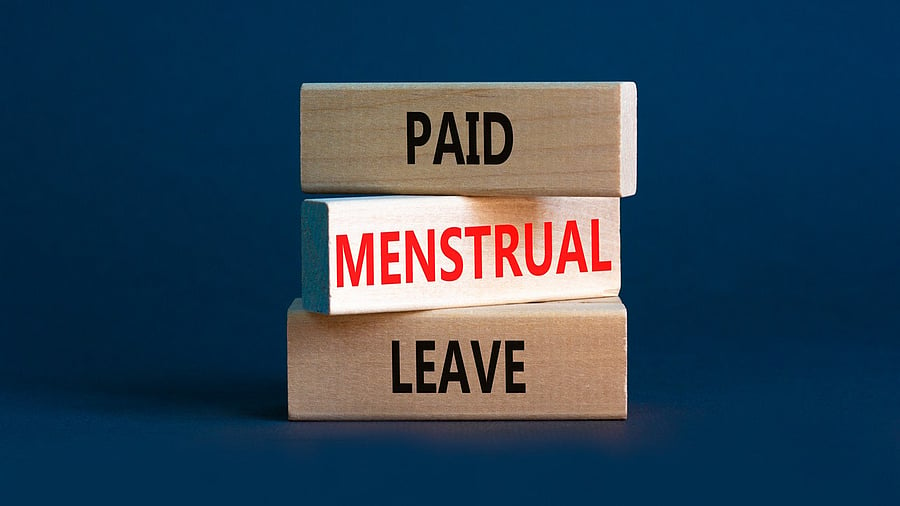
A representative image.
Credit: iStock Photo
Despite growing public support and fresh policies in Karnataka, women in India remain divided on whether menstrual leave empowers them or inadvertently sidelines them in the workforce.
However, a state-wide menstrual leave policy is not only a matter of health justice, but also a challenge to outdated notions about women’s capabilities — and, therefore, deserves robust implementation across India.
As Karnataka joins Bihar, Kerala, Tamil Nadu, Sikkim, and Odisha in adopting menstrual leave, workplaces nationwide must confront not just logistical hurdles but also deeply entrenched social attitudes about women’s bodies. While some fear that such policies may exacerbate hiring discrimination and might paint women as 'less capable' than men, comprehensive menstrual leave is essential for workplace diversity, gender equity, and health. It is also important to look at how the State’s approach to women’s biology shapes both opportunity and exclusion.
Data about menstrual disorders
Contrary to claims made in a Lok Sabha answer suggesting that menstrual pain severely impacts only a small fraction of women, a 2023 study from Gynoveda shows that 70 per cent of women aged 18 to 45 experience menstrual disorders. Further, a 2023 survey done by Everteen has shown that 73 per cent women across multiple cities between 18-25 would want companies to allow them menstrual leave; however, 71.7 per cent do not want these leaves to be paid, fearing gender discrimination. The hiring discrimination based on gendered needs in different organisations is not a story solely linked to menstrual leave policy; it has been a roadblock across diversity-inclusive leaves.
According to a 2023 Ministry of Labour and Employment report, 9.3 per cent female labour participation is reduced due to health reasons. Smriti Irani, the then Women and Child Welfare Minister, argued that the national adoption of menstrual leave has been delayed due to concerns about workplace discrimination against women. The National Family Health Survey highlights attitudinal shifts in menstrual hygiene practices; however, persistent rural-urban disparities reflect discriminatory gendered perceptions in society.
The discriminatory hiring policies will continue to challenge the existing implementation of the menstrual leave policy across India. Although research reports from different states have shown that women support menstrual leave to manage pain and maintain menstrual hygiene. A report from Tamil Nadu has shown that among 955 females, 82.3 per cent supported menstrual leave to take care of themselves. Similarly, another research from Prayagraj has shown that 87.3 per cent females from educational fields to professional industries would take a menstrual leave, if provided.
State’s stance on women’s bodies
Despite the existing quantitative research on women’s preference for menstrual leave, the conversations over social media platforms have shown that these leaves would rather become a chance for gender discrimination in hiring policies. These conversations have been the voices of women representing leadership positions in several organisations. Inevitably, these narratives are also reflected in the way the State recognises women’s labour and bodies. The maternity leave policy, for example, is often seen as a ‘benefit’ given to women labourers. Instead of enforcing equal paternity leave policies, the onus of reproductive labour is entrusted to women. This not only reproduces the binary of gender roles in workplaces, but also reduces women to their caregiving roles.
The idea of menstrual leave would encourage the State to regard women as caretakers of themselves and for themselves. While political leaders and experts have argued that menstrual leave policy would reduce this biological process to a ‘handicap’, menstrual leave policies would allow women to recognise the need for their bodies. The State’s equal implementation of diverse menstrual leave policies would push for a recognition of self-nurturing discourse for women.
Another argument for a nationwide implementation of the policy is to consider the diversity of needs among women. Women are not a homogeneous group, and it would be crucial for organisations to recognise the diverse needs of women in terms of caste, class and ethnicities. It is important to underline here that not all bodies are the same, and the above-mentioned research tells us that. In this regard, to each their own will aid in the formulation of a gender inclusive policy.
Manisha Chachra is a political scientist and academic. X: @ChachraManisha.
(Disclaimer: The views expressed above are the author's own. They do not necessarily reflect the views of DH.)